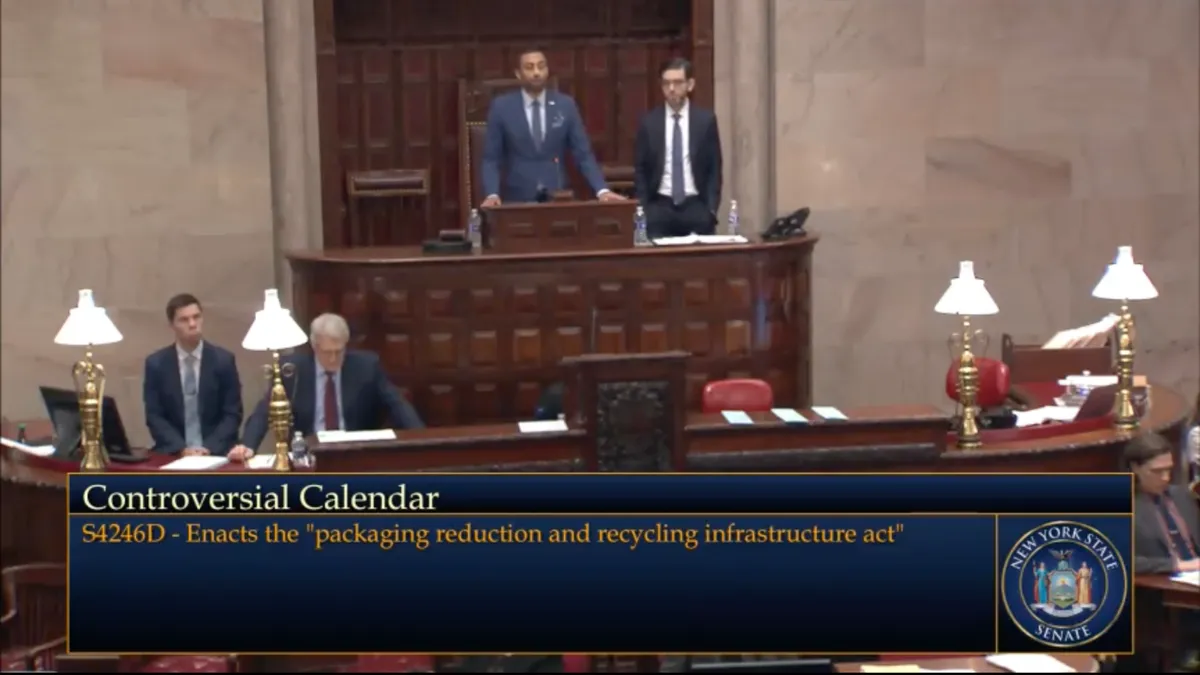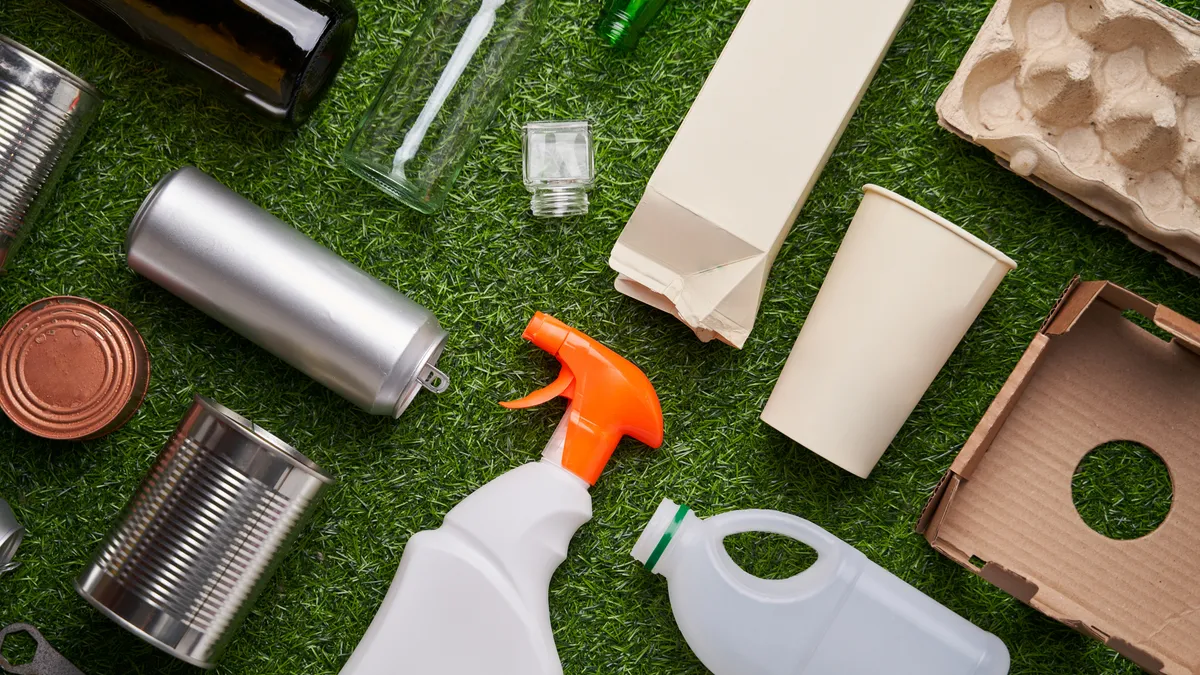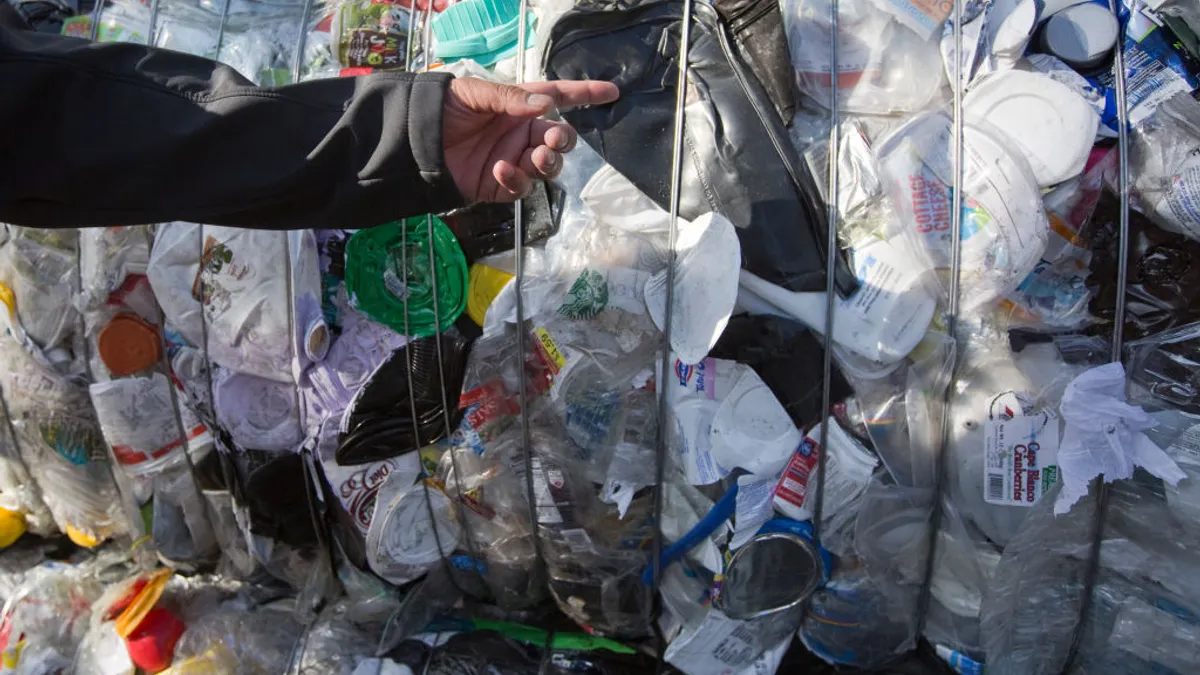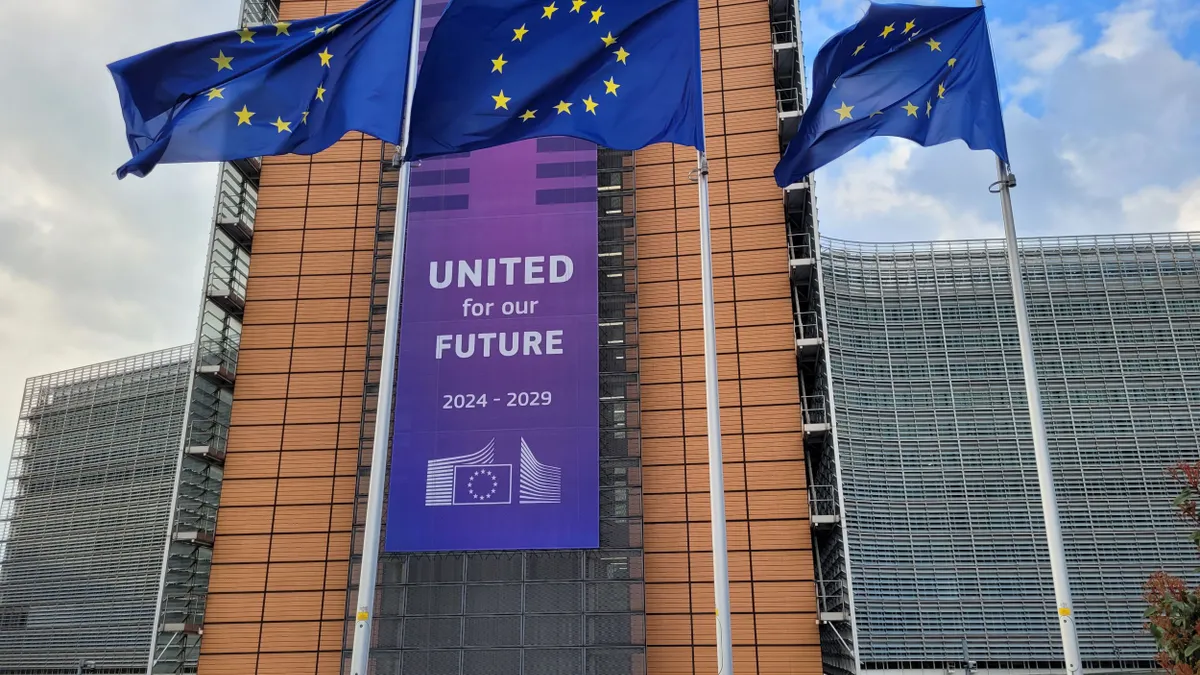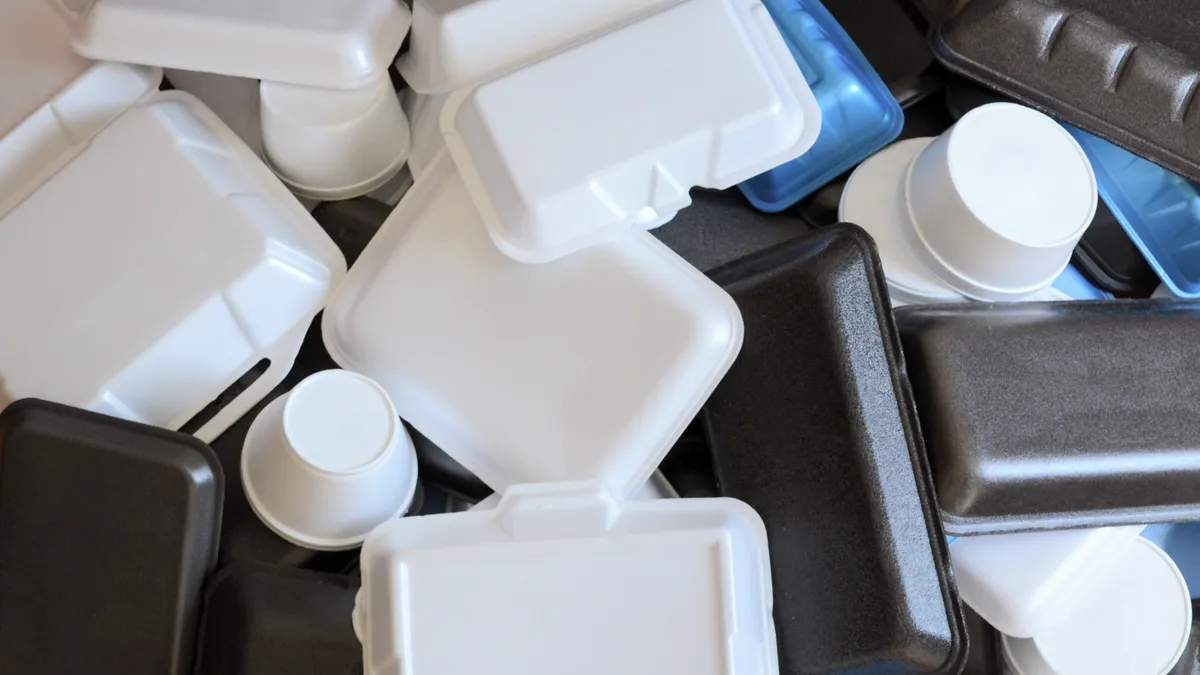The New York State Senate passed an extended producer responsibility for packaging bill on Friday after years of debate and stalled attempts. But the legislature’s formal session ended without the Assembly bringing the bill to a vote.
The bill would have set plastic reduction thresholds and recycled content requirements, and banned certain chemicals in packaging. It would have established a producer responsibility organization, with fees going toward state recycling infrastructure and related efforts.
The Packaging Reduction and Recycling Infrastructure Act, sponsored by state Sen. Pete Harckham, passed 37-23 on Friday afternoon.
Covered material categories, as written in the bill, would have included paper, cardboard, corrugated cardboard, wood, glass, PET, HDPE, expanded polystyrene foam, polystyrene, bioplastics, generic plastics, plastic film, other plastics, ferrous metals, aluminum, tinplate, generic metals, and mixed materials including laminates and packaging containing more than one of the above materials.
Three years in, the bill would have banned some types of intentionally added toxic substances and materials in packaging. They include PFAS, polyvinyl chloride, bisphenols, ortho-phthalates, polystyrene (excluding expanded polystyrene foam) and multiple others. The inclusion of PVC was one of the focuses of debate in the Senate on Friday. The bill would have established a nine-member toxic packaging task force, with a packaging industry representative, to review toxicity in packaging and recommend additional substances to ban.
The bill would have prohibited chemical recycling from being considered recycling and called for using ecomodulated fees to encourage producers to reduce plastic packaging.
It also contained ultimate postconsumer recycled content targets for certain products, including a 35% minimum for glass containers manufactured in the state and 40% for many paper carryout bags sold or offered in the state. Its targeted recycling and reuse rates by 2029 included 25% for plastic packaging and 35% for non-plastic packaging, which would have scaled up in subsequent years.
Producers also would have been on the hook to reduce the amount of “primary plastic packaging material” in products they sold or distributed in the state by 25%, either on a companywide basis or by unit weight, according to the bill — targets that were lower than what was proposed in prior versions of the bill.
The legislation was heavily debated in recent weeks, with support from advocacy groups such as Beyond Plastics. According to a memo read by a state senator on June 7, opposition came from industry groups such as the American Chemistry Council, American Forest & Paper Association, American Beverage Association, Kraft Heinz, Consumer Brands Association and multiple others.
After the bill did not make it through, American Beverage spokesperson William Dermody said the association supports “successful EPR systems that will increase recycling rates and establish a circular economy so that our bottles can be remade again,” a statement read. “It’s why our industry advocated for EPR systems in Minnesota and Colorado that are now law, and we look forward to working with lawmakers and Gov. Hochul on an EPR system in New York that is effective, financially sustainable and works for all New Yorkers.”
Harckham said the bill went through multiple amendments in an effort to appease industry concerns. Changes included raising the revenue threshold for covered producers, using the preferred producer responsibility organization model of industry-led groups and adding flexibility for how they can meet certain targets.
Bill opponents cited claims that certain companies might stop selling products in the state, but Harckham disagreed.
“We are one of the largest economies in the world,” he said, speaking about New York, before noting packaging EPR is being adopted in the U.S. and other countries. “Manufacturers will be adjusting because there is a national movement to do this.”
Supporters have already said they plan to keep pushing this issue in New York.
“We're absolutely not giving up! We're going to take a little time to recover from this end-of session marathon and then turn our attention to building support in the Assembly,” wrote Beyond Plastics President Judith Enck in a Saturday email to supporters.
Minnesota has been the only state this year to adopt a packaging EPR law, with support from many industry groups. Maine was the first to pass a packaging EPR law in 2021, then Oregon. In 2022, Colorado and California followed suit. No new programs made it through in 2023, though Maryland and Illinois passed study bills.
Meanwhile, a proposal to increase deposit values and the scope of containers accepted in New York’s bottle bill was also unsuccessful. New York’s bottle bill dates back to the 1980s, but it was most recently updated in 2009.
The standard deposit value is 5 cents. Bottle bill expansion legislation this year sought to increase that to 10 cents per container. It also would have raised the handling fee from 3.5 cents to 6 cents. It also aimed to expand the list of allowable containers to include more bottled non-carbonated beverages, such as coffee, tea, wine and liquor products.




